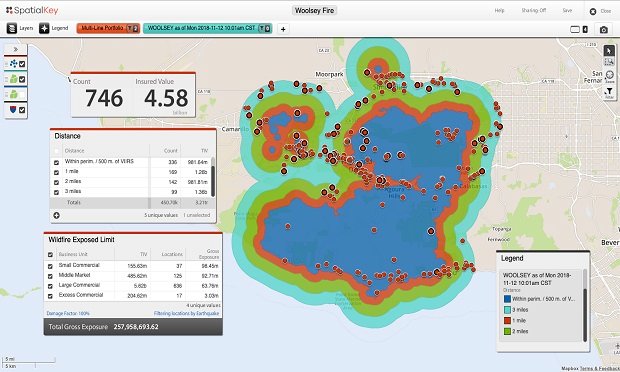The use of predictive analytics in insurance is becomingincreasingly widespread as companies realize how the power ofinsight can impact business growth, risk management, and losscontrol. The number of insurers using these sophisticated models isgrowing daily and, there are more business capability areas thatare reaping the benefits. Recent SMA research indicates that overone-third of insurers are currently investing in predictiveanalytics and models.
|Most insurers started using predictive analytics in theunderwriting area. Those that are staying ahead of the curve arecontinually introducing new external data sources in their effortsto glean additional insightful information about the risks they areunderwriting. As the available data becomes more robust and moreplentiful, there are even more opportunities to view risks fromvarying vantage points—gaining insights that were not previouslypossible.
|Insurers are telling SMA about a major concern that keeps themawake at night. It is not about losing a specific risk to acompetitor, but rather about a case when that same risk returns totheir book of business. This is the most troubling of allsituations. When you don't understand why you lost the opportunityto write the risk initially, then you most likely do not have afull picture of why another company let it go and it has ended upon your books. The key question an insurer wants answered is, “Whatdoes another company know about this risk that we are not seeing?”This demonstrates why predictive analytics are so important.
|Predictive analytics also are becoming increasingly important inthe claims arena, particularly in three key areas—identification ofspecial handling needs, assignment of the right resource, and frauddetection. Insurers are using predictive analytics early in theclaims life cycle to determine if a claim should be given specialattention. Using just the initial claim information that istypically associated with a claim, insurers are unable to identifymany of the situations that should be getting exceptionalconsideration.
|By using predictive analytics, insurers can run through a numberof scenarios, identify early signs of potential issues, andautomatically flag situations that need special handling. Theseflagged claims can then be assigned to an appropriately skilledclaims adjuster, mitigating losses and speeding resolution.
|Without the insights available with the use of predictiveanalytics, insurers are only able to view the traditional claimsdata and make adjuster assignments based on workload and pastresource allocation experience. Predictive analytics affordinsurers real advantage by giving them the power to capitalize onthe strengths of their resources and better control losscosts.
|The use of predictive analytics in the fight against fraud hasgained significant traction in recent years. Fraud rings areoperating with highly sophisticated tools and techniques. Thebattle requires a mature analytics engine that is able toconsolidate a view of relationships that encompass multipleunrelated parties. Insurers are using predictive analytics duringthe claims intake process to identify potential fraud. Using a viewof the characteristics of a claim, the nature of the claim, therelationships of the parties involved, plus a number of otherconnected attributes, the insurer has more control and canproactively engage a special investigation unit review in caseswhere it is warranted.
|Business development and marketing are otherkey areas where insurers are reaping benefits by using predictiveanalytics. The pressure to grow books of business has insurersturning to more sophisticated models to determine what is possibleand what will be the best fit for a particular company's strategyand capabilities.
|Predictive analytics are being used to help insurers definetheir options for profitable business models and to expose untappedopportunities. Once opportunities are prioritized, marketingdepartments are using predictive modeling to select target marketsand design messages that will resonate with the desiredaudience.
|While billing has not been a major part of the predictiveanalytics conversation in the past, things are rapidly changing.Attributes such as number of NSF's, statutory notices ofcancellation, reinstatements, or bill plan changes can all bewarning signals for potentially unprofitable risks. In most cases,the billing area is more of a contributor to predictive models thana user of predictive modeling results.
|Modern insurers are realizing the real power of predictiveanalytics. The investments are paying top and bottom linedividends—big ones. SMA research shows that 38 percent of insurersare increasing their spending on predictive analytics technologiesand tools. Predictive analytics will not diminish in importance;these highly sophisticated models will play a major role indetermining winners and losers. Insurers must continue to gainexperience in using predictive analytics.
|The stakes are high. These sophisticated models, coupled withthe right combination of internal and external data, are providingintelligence that is increasing profitability, decreasing cost, andimproving operational efficiency.
Want to continue reading?
Become a Free PropertyCasualty360 Digital Reader
Your access to unlimited PropertyCasualty360 content isn’t changing.
Once you are an ALM digital member, you’ll receive:
- All PropertyCasualty360.com news coverage, best practices, and in-depth analysis.
- Educational webcasts, resources from industry leaders, and informative newsletters.
- Other award-winning websites including BenefitsPRO.com and ThinkAdvisor.com.
Already have an account? Sign In
© 2024 ALM Global, LLC, All Rights Reserved. Request academic re-use from www.copyright.com. All other uses, submit a request to [email protected]. For more information visit Asset & Logo Licensing.








